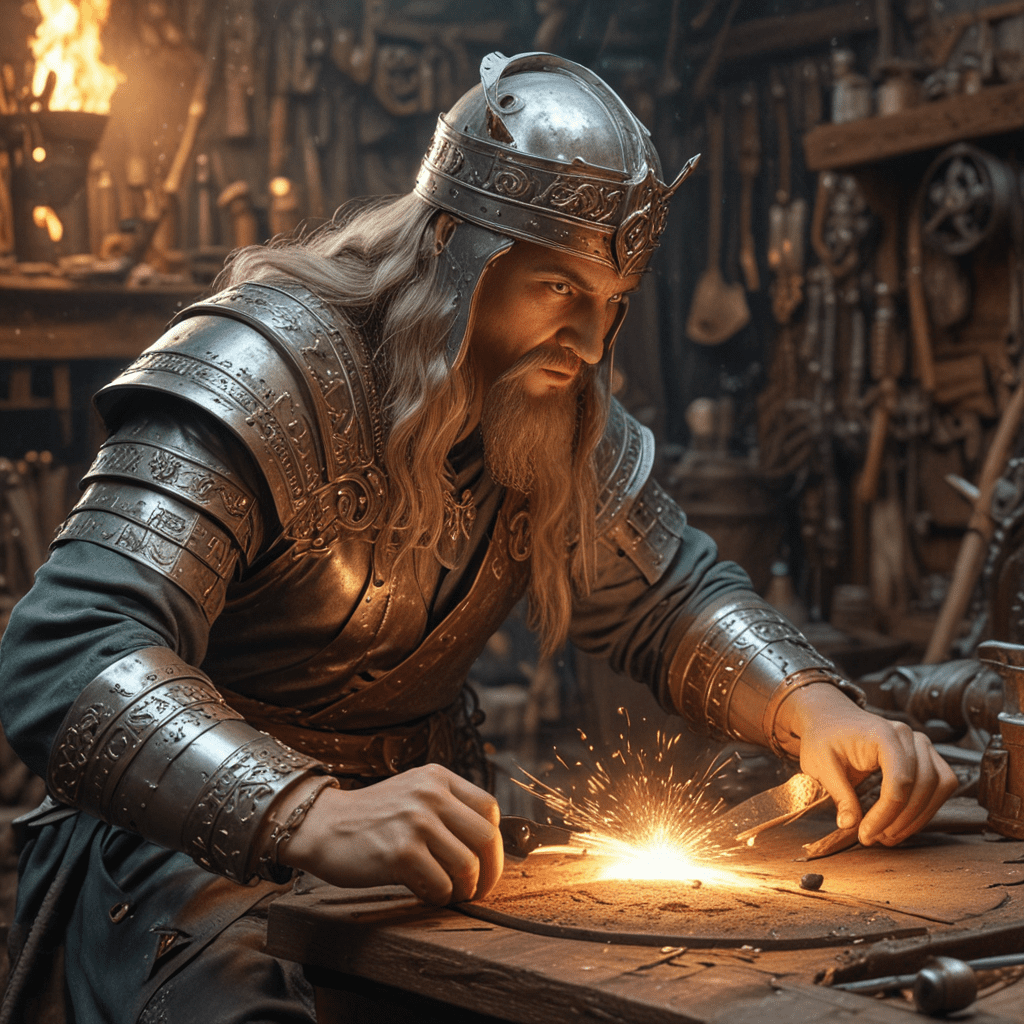Slavic Mythology and the Art of Metalworking/Smithing
Introduction
In Slavic mythology, metalworking and smithing held profound significance as a symbol of craftsmanship and divine power. The art of forging was revered as a sacred practice, connecting the realm of mortals with the celestial sphere. Through the hands of skilled smiths, the raw materials of the earth were transformed into objects imbued with magical properties and cultural significance.
Deities of Metalworking
Slavic mythology featured several deities associated with metalworking. Svarog, the father of the gods, was revered as the patron of smiths and the creator of heavenly bodies. Koliada, the sun god, was believed to forge the celestial bodies and bestow blessings upon those who worked with metal.
Mythic Origins of Metalworking
Legends abound regarding the origins of metalworking in Slavic mythology. One tale recounts how the gods stole the secret of forging from the sun, using it to create weapons and tools for humans. Another story tells of a magical bird that brought the knowledge of metalworking to the earth, sharing it with the people who befriended it.
Magical Properties of Forged Items
Objects created by Slavic smiths were believed to possess extraordinary powers. Weapons forged in the flames of a sacred furnace were imbued with divine strength and could shatter the defenses of enemies. Amulets and charms crafted from metal were said to protect against evil spirits and bring healing to the sick.
6. Social Status of Smiths
Slavic smiths held a revered position in society as guardians of ancient knowledge and skilled artisans. Their workshops were considered sacred spaces, and they enjoyed social and economic privileges. Smithing guilds protected the craft's secrets and established standards of craftsmanship, ensuring the quality of forged items.
7. Rituals and Beliefs Associated with Metalworking
Metalworking was accompanied by rituals and beliefs that added to its sacred nature. Before commencing work, smiths invoked the blessings of Svarog and Koliada, seeking divine assistance in their endeavors. Superstitions surrounded the smithy, with people believing that forged items possessed the power to ward off evil spirits and bring good fortune.
8. Symbolism of Metal
Metals played a significant role in Slavic mythology, embodying concepts such as sun, fire, strength, and purification. Different metals held specific meanings: iron represented power and protection, silver symbolized purity and healing, while gold was associated with wealth and divinity. Slavic ornaments and iconography frequently incorporated metal as a symbol of divine power and human craftsmanship.
9. Archaeological Evidence of Metalworking
Archaeological excavations have unearthed numerous Slavic workshops and tools, providing tangible evidence of the advanced metalworking skills possessed by ancient Slavic societies. Excavated artifacts range from weapons and tools to jewelry and decorative objects, showcasing the diversity and artistry of Slavic smiths. These findings contribute to our understanding of Slavic technological advancements and cultural practices.
10. Cultural Heritage and Contemporary Relevance
The legacy of Slavic metalworking continues to inspire contemporary art and culture. Traditional smithing techniques are preserved and revived by skilled artisans, ensuring the transmission of ancient knowledge and craftsmanship. Slavic mythology remains a source of inspiration for artists, who incorporate motifs and symbols from metalworking into their creations. By exploring the rich heritage of Slavic metalworking, we connect with our cultural roots and appreciate the enduring power of human ingenuity.
Frequently Asked Questions (FAQs)
What was the significance of metalworking in Slavic mythology?
- Metalworking was revered as a sacred practice, intimately connected with divine power and human craftsmanship.
Who were the deities associated with metalworking in Slavic mythology?
- Svarog, the father of the gods, and Koliada, the sun god, were the primary deities associated with metalworking.
What were some of the magical properties attributed to forged items in Slavic mythology?
- Weapons and tools were believed to possess divine strength, while amulets and charms protected against evil spirits and brought healing.
What is the historical evidence for metalworking in Slavic societies?
- Archaeological excavations have revealed numerous Slavic workshops and tools, showcasing the advanced metalworking skills of ancient Slavic societies.
How does the legacy of Slavic metalworking influence contemporary culture?
- Traditional smithing techniques are preserved and revived by skilled artisans, and Slavic mythology continues to inspire artists in various creative fields.




